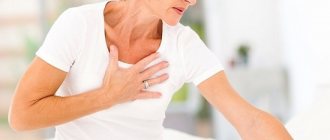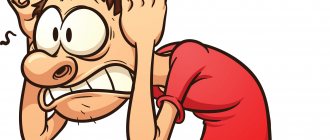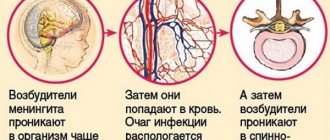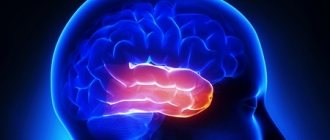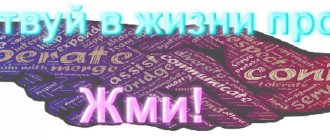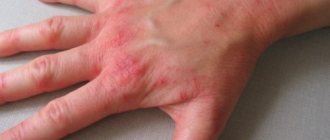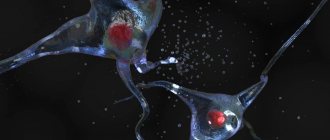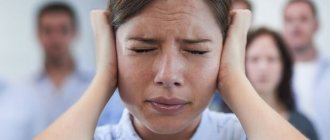Tachycardia and panic attacks
Panic attacks, according to modern medicine, can provoke tachycardia. Moreover, paroxysmal tachycardia as a form of arrhythmia is one of the most striking symptoms of panic, accompanying each attack. Tachycardia during panic attacks lasts, with short intervals, from ten minutes to half an hour.
In some cases, a patient who experiences a panic attack for the first time and has no idea about this phenomenon experiences severe fear, considering the arrhythmia to be a consequence of cardiovascular disease. His first instinct is to seek medical help. However, the electrocardiogram does not show any abnormalities in the heart. The patient becomes more confident that the doctors are not qualified enough and that they did not refuse him help, although he is sick. Anxiety and fear for your life provoke the next series of attacks. This is how the self-starting panic mechanism begins to operate.
Lack of air
- firstly, hyperventilation syndrome, when a person, during fear and panic, begins to breathe quickly and shallowly. He begins gulping oxygen, his lungs filling up. At the same time, the person breathes very quickly and shallowly; it seems to him that there is not enough oxygen. In fact, at this moment his lungs are filled with air and therefore, when he tries to take a breath, he does not have a feeling of fullness, fullness of inhalation, because there is already so much oxygen, and it no longer fits in the lungs;
- secondly, tension occurs in the pectoral muscles and abdomen, which compress the same lungs, and muscle tension, as we said above, arises from fear. There is an interdependence here: fear is always accompanied by muscle tension, and muscle tension is always accompanied by anxiety. This must be understood and always remembered.
We looked at the most common symptoms of a panic attack and found out why you shouldn’t be afraid of them. Those people who are looking for a way to treat panic attacks need to remind themselves of this every time they experience these symptoms.
How to distinguish tachycardia from panic?
If tachycardia is a consequence of fatigue, vegetative-vascular dystonia or the initial stage of cardiovascular disease, then it goes away with medications. Drugs such as Corvalol, Valocardine, as well as sedatives - valerian root, glycine, novopassit - help stop tachycardia. In the case of a panic attack, if they help the patient, it will be a placebo effect: the patient must believe that his condition will improve from these drugs. If he convinces himself of the severity of the disease, these measures will not be enough.
Just as a panic attack provokes tachycardia, tachycardia in a patient suffering from panic attacks can cause another attack.
Everything is complicated by the fact that paroxysmal tachycardia, associated with a series of too frequent heart contractions, feels very similar to the extrasystole that accompanies atrial fibrillation - a serious disease that requires immediate treatment, or even surgical intervention.
How to prevent attacks?
Extrasystole that develops against the background of panic attacks is often frightening, so those people who have to deal with this are interested in how to get rid of such arrhythmia. There is not always a need for drug therapy. In the case when the symptoms develop against the background of psycho-emotional or nervous tension, it is enough to change the situation to normalize the condition.
Additional tips for dealing with seizures:
- Avoid stimulants such as strong tea and coffee.
- Refusal of alcoholic drinks.
- Inclusion in the diet of foods enriched with potassium and magnesium (dried apricots, oranges, salad and cereals).
- Elimination of stress and tense conditions.
Stories from clinical practice
In clinical practice, an example is given of a middle-aged man suffering from atrial fibrillation and in remission. One evening, when the man was relaxing in front of the TV with a can of beer, he “slipped into an extrasystole.” He was scared because the day before he had heard the story of a friend whose remission for a similar disease lasted two years (it lasted the same amount for this patient).
The man did not sleep all night, listened to his condition and nervously paced around the room. The statement is true: “he who seeks will always find,” - in the morning he again sensed a disruption in the rhythm. Throughout the next day, the man was tormented by long-lasting, up to half an hour, attacks of tachycardia, accompanied by chest pain and shortness of breath. The attacks passed and recurred every two to three hours. In the evening, the patient called the ambulance, the paramedics who arrived did an ECG, found no abnormalities and left.
At night the man hardly slept, and in the morning he suffered a severe panic attack, with fear of death and the expression of delusional ideas. The patient's relatives called emergency medical assistance again. A few days later he was taken to the neurosis clinic.
After a month of treatment, his condition improved. Art therapy played a big role (the patient continued to do it after discharge, visiting the very group that worked at the clinic): it confirmed the patient’s confidence that he was healthy¸ and that atrial fibrillation had left him alone. The man also learned that the lifestyle he led (passive rest, beer, TV, lack of physical activity), combined with “sedentary” office work, is contraindicated for patients with nervous disorders. He gave up bad habits and began spending weekends in nature, with his wife and children. These changes in behavior not only cured him completely (both from attacks of tachycardia and from panic attacks), but also strengthened the family.
Another patient, who also suffered from attacks of tachycardia, was operated on under a quota at Almazov’s clinic. A unique operation, carried out using the cauterization method, cured him and brought him back to life (before the operation, he suffered from seizures for two years and was practically unable to work).
However, six months later, the patient read an interview with a “luminary” from the clinic where he received help. An experienced doctor said that in some cases one operation is not enough, and patients have to be operated on again, and if this does not help, then a third operation definitely solves the problem. Literally the next day, the patient began to have irregular heart rhythms. A few days later he went to his doctor and underwent an examination, which showed no abnormalities. However, he insisted that his condition was getting worse (and indeed it was getting worse: panic attacks were now occurring almost every night), and demanded that he be placed on a 24-hour monitor again and again. With a monitor, this man ran up the stairs and even lifted a heavy weight, causing rhythm disturbances. He was fired from his job because his employer was tired of his constant illnesses, and began to live off his wife. A year later, with great difficulty, the man achieved a second quota and was operated on again.
Heart attack: what is it?
The term “heart attack” is not very familiar to our ears; it is more common in Europe and the USA. Our analogue of this condition is the so-called pre-infarction condition. But whatever the name of this problem, the essence remains the same. A heart attack occurs when one of the arteries (coronary vessels) supplying the myocardium (heart muscle) sharply spasms (narrows) or is blocked by a blood clot or a detached plaque of atherosclerosis. As a result, the actively working myocardium receives extremely little blood saturated with oxygen and glucose (experiences ischemia). If ischemia is strong and prolonged, more than 5-10 minutes, the heart muscle dies - necrosis occurs: this is how myocardial infarction develops.
Heart attack: how does it manifest?
Symptoms may vary depending on age and gender; in women, heart attacks are usually less “expressive” than in men. However, there are typical signs and symptoms of this condition:
- Unpleasant sensations in the chest area, pressing, pinching or painful,
- Pain in the collarbone or upper ribs, in the arm or both, discomfort in the neck or back, shooting in the jaw or stomach,
- Sensation of a “concrete slab” on the chest,
- Stomach pain that feels like severe poisoning
- Shortness of breath or a feeling that there is not enough air,
- Palpitations, heart fluttering,
- Painful nausea, clammy skin with cold sweat,
- Pale or sallow skin
- Dizziness, blurred vision, “cotton wool” in the head,
- A feeling of horror or imminent death.
Although pain inside the chest, where the heart is, or radiating into the arm is a common sign of a heart attack, women may not experience it. For many, a heart attack proceeds atypically; there may be a feeling of immense fatigue with severe weakness and vague discomfort in the shoulders and chest. Heart attacks and related manifestations in women usually occur in old age, but panic attacks can also occur in young people. On average, the likelihood of having a heart attack increases after age 65. However, heart attacks can occur much earlier, up to 30-40 years of age, if you have high cholesterol or a hereditary predisposition to heart pathologies.
When are heart attacks likely?
Pre-infarction symptoms and a heart attack usually last more than half an hour. There are also a number of external factors and conditions that make this event more likely. This:
- Smoking,
- Early onset of hypertension (with very high blood pressure numbers),
- High amount of cholesterol in the blood (more details here )
, - Lack of physical activity
- Chronic stress.
Some women also have greater risks, including:
- Having suffered from diabetes for many years,
- In postmenopause,
- Constantly living in a state of stress,
- Having been diagnosed with atrial fibrillation, this is a heart pathology that forms an excessively rapid and extremely irregular heartbeat.
The risk is higher if you have a family history of heart disease or if your loved ones have had heart attacks. To prevent this, lifestyle interventions (diet changes, increased exercise) and medications (medicines to lower blood pressure and cholesterol) are needed. Some women will also need surgery to open blocked arteries. Sometimes heart attacks are large and fatal, but for most people, chest pain is a warning sign to make some lifestyle changes, such as lowering your cholesterol and blood pressure, improving your diet and increasing exercise.
PAROXYSMAL TACHYCARDIA OR PANIC ATTACK?
Hello! I have already contacted you. Here is the previous correspondence No. 705677 I constantly feel extrasytols Julia Female, 21 years old. Ukraine Chernovtsi Registered user has been tormented by heart problems for over a year now... I must say they happened before, but very rarely, when I stood up and sat down abruptly... I noticed that they began after suffering from a sore throat, the high temperature was only for one or two days. .but about 4 years have passed since then..frequent extrasitols began after getting married and moving to a new apartment..there was a lot of stress, because of this I have been living in constant stress for more than a year..I recently decided to get a holter, I want find out your opinion, is this scary, especially regarding the blockade, and what should I do about it, because I have no strength anymore? Here is the Holter conclusion: Average heart rate 92, during the day 100, at night 75 Minimum during sleep 60 Maximum 166, when climbing the stairs Types of contractions Normal 127952, 99.96% Superventricular 1 Ventricular 53 Single 53 Sinus rhythm. Predisposition to tachycardia in the daytime against the background of light loads. At night, a 1st degree block is recorded with an interval of PQ = 0.22-0.24, at 9:03 an episode of 2nd degree AV block with an atypical Wenckebach periodicity of 6:5 is recorded. Ventricular extrasystoles of the trigeminy type were recorded during excitement (she passed the exam). There are no diagnostically significant ST-T dynamics. HRV indicators are normal.
I should also say that I have stage 1 mitral valve prolapse with stage 1 regurgitation 06/17/2013 15:42 Complain about this message to the site administrator Replies: 2;
Direct specialty Kuklina Elena Nikolaevna. cardiologist Rating. Kuklina Elena Nikolaevna Complain about this message to the site administrator
Elena Nikolaevna Kuklina, cardiologist You’re not describing anything terrible, it doesn’t interfere with life. Stress and neuroses can and should be overcome; rational physical education will help you with this. If you can’t cope on your own, seek help from a psychotherapist. Creation time: June 17, 2013 21:19
Ratings: 1 Direct specialty Google Eduard Romanovich. Cardiologist. Pensioner. www.guglin.ru; [email protected] Rating. Guglin Eduard Romanovich Complain about this message to the site administrator
Guglin Eduard Romanovich Cardiologist. Pensioner. www.guglin.ru; Here it is not extrasystoles that need to be treated, but neurosis. This is mainly done by psychotherapists. Creation time: June 17, 2013 21:52
With this in mind, I went to a cardiologist; in conclusion, she wrote me metabolic cardiomyopathy, as I understood, cardiomyopathy and ventricular extrasytolia. I found on the Internet that you can die from ILC. Now I'm even more afraid of everything. They prescribed me ATP-long 20 mg, Magnerot and A-Diston (herbal tincture for calming). Eduard Romanovich, I’m only 21 years old, but I’m already like a senile old woman. There was an exam, so I couldn’t leave for a week, the extrasitols didn’t let me sleep, and on top of all this, there was something wrong with my stomach, as if there was always food in my throat. I have been suffering with all this for over a year now, I also have vegetative crises, I hope that this is them and not something serious. Heat rushes to the head from the back, the heart jumps out of the chest, the hands become cold and very wet, and not only the hands. And on top of all this, I’m afraid that I have myocarditis, or something from this opera. It's scary with all this. And until recently I was active, even too much, there were a lot of me everywhere. She was involved in swimming, volleyball and dancing. Nothing ever bothered me. Advise something, or say that yes, I am sick, go get examined and treated. Because no one believes me anymore that something hurts me, and my family and husband constantly laugh at me.
Heart neurosis - cardiophobia
A special form of phobia, along with panic syndrome, is cardiophobia, which should be described especially due to its characteristic clinical picture and significant frequency. It mainly occurs in young people, more often in men, and also in children.
Cardiophobia is not the only form of functional heart disorder. It is necessary to preface it with the following: the function of the heart is autonomous and is not noticed during its normal activity. Only a strong load, as well as emotional stress, lead to increased cardiac activity and tangible reactions of the heart. In conflict situations and neuroses, cardiac sensations and complaints are frequent and varied, they can be divided as follows: a) functional cardiac complaints (hyperkinetic cardiac syndrome, organ neurosis of the heart): they manifest themselves without organic changes in the heart, the patient complains of pressure or stabbing pain in the heart area, makes vague complaints; he experiences a general decrease in activity and other functional phenomena, as in psychovegetative syndrome. The ECG shows sinus tachycardia and sometimes mild manifestations of hypertension. In such cases, complaints can be easily relieved with beta blockers. However, the doctor must verify the psychoreactive origin of the complaints; b) paroxysmal supraventricular tachycardias can occur under similar conditions, but they should not be regarded as purely somatopsychic disorders, which, however, can intensify these tachycardias; c) cardiophobia: it is mainly defined by such terms as cardiac neurosis in the narrow sense of the word, cardiac neurosis type A, cardiac hypochondria, cardiac anxiety neurosis, anxious hysteria, tension syndrome. This disease, which requires psychiatric and psychotherapeutic treatment, will be described in detail here. It is distinguished from cardiac neurosis type B, which is associated not so much with fear as with hypercompensatory (antiphobic) processing.
Symptoms and course. Paroxysmal anxiety states, in which patients fear the cessation of heart function and death, can occur without the presence of a somatic disease. At the beginning of the next attack, nausea, dizziness, internal anxiety, and slight compression of the heart appear. However, in many cases, without any warning, a severe attack occurs: a strong heartbeat felt throughout the body, a slight increase in blood pressure, a severe feeling of squeezing and tightness in the heart area, shortness of breath, sweating, dizziness and a feeling of fainting (but not loss of consciousness), trembling throughout the body and elementary fear. The patient believes that his heart will stop in a second and he will drop dead. This is the fear of self-destruction and death. When very excited, patients run around and beg for help. If an attack of fear occurs while traveling in a car, the patient is forced to stop and take a break.
Fear may not be caused by cardiac functional disorders, and cardiac sensations themselves should not be considered as pure consequences of fear. It is more important to establish a psychosomatic connection: cardiac sensations and affect are an expression of a single somatopsychic process - fear. The attack lasts from a quarter of an hour to two hours. When help arrives or is just expected, excitement and fear subside. The appearance of a doctor is more important than sedative medication. In hospitals, where a doctor is always available, cardiophobic attacks are less common than outside the hospital.
Pathophysiologically, sympathetic-vasal shifts are found during attacks of phobias; but not every sympathetic-vasal attack has cardiophobic symptoms.
After the first attack, phobic development occurs. Patients lose their mental balance, live in constant fear, waiting for the next attack or death, experiencing the fear of fear (fear of anticipation, phobia). At the same time, neither the therapist’s message about normal heart function nor persuasion that previous attacks had consequences helps them. The frequency of attacks and the intervals between them are irregular. At intervals, the patient cautiously monitors his cardiac functions, controls the pulse and records its slightest deviations. He perceives random extrasystoles as indisputable signs of a disease with a hopeless outcome. Patients observe with caution other vegetative manifestations, as well as slight fluctuations in their well-being. Patients take care of themselves, hardly dare to walk, strive to eliminate all stress, worries and, first of all, difficult situations in order to prevent an attack (evasive behavior). Instead of the fear of death, in many cases the fear of fear and of fear-inducing situations increasingly appears.
Because of the fear of attacks, the patient is reluctant to remain alone. Many people fear that they will have an attack suddenly in their sleep, and they will not be able to react quickly enough. The consequence of this is persistent sleep disturbances. Others can no longer remain among people - cardiophobia begins to be combined with agoraphobia or claustrophobia. Fear and its avoidance lead to phobic behavior, which causes significant harm to both the professional activity and the private life of the patient.
Cardiophobia tends to be chronic. Follow-up studies have shown that after 20 years, symptoms persist in more than half of the patients, although with less dramatic exacerbations. Early disability is not uncommon, although cardiophobia does not lead to organic changes in the heart.
Conditions of occurrence. The reason for the first cardiophobic attack is often an acute conflict and overstrain, separation and disappointment, a situation of loneliness and abandonment, as well as anxiety in the event of the cardiac death of someone close. Knowing that cardiac death can always happen, even in the young and healthy, becomes a worrying factor. Intensive consumption of coffee and nicotine can trigger this process.
However, these factors are not enough to explain. The actual occasion may be the final blow after a long neurotic development. The beginning often comes from childhood. Mostly spoiled and dependent children are affected, with a pronounced dependence on the mother, largely with ambivalent attitudes: the expectation of love, on the one hand, and the desire for independence with aggressive impulses, on the other, with contradictory fantasies of attachment and separation. Such attitudes are especially dangerous when connections are broken, separations and disappointments occur. A cardiophobe often lives in fear of separation before he realizes that he wants it and is afraid of it. Joint problems with parents and conflicts with partners regularly arise.
In the field of learning psychology, the same laws apply as in cases of anxiety neuroses.
Classification. F45.3 according to ICD 10. Differential diagnosis. Fear, trembling and agitation may resemble acute psychosis and lead to the misdiagnosis of agitated depression or fear psychosis. However, cardiophobic complaints are also found in melancholic patients. A syncopal attack is less dramatic, it leads to loss of consciousness, fear and other phobic phenomena are absent.
The most important is the differential diagnosis with infarction, coronary insufficiency and paroxysmal tachycardia. Cardiophobes are often younger than heart attack patients; their blood pressure does not fall, but is slightly increased, the attack is somatically less threatening: it is accompanied by fear, which is more intense and noisier. The complaints are described as less intense with pain. As with all functional disorders of the heart, pain is mainly localized in the left side of the chest, but can spread to the left arm, i.e. the localization is no different from that of a heart attack or coronary insufficiency, which can be longer lasting than cardiophobic attacks. Paroxysmal tachycardia also occurs less dramatically for the patient, the acceleration of the pulse is more pronounced than during a cardiophobic attack, and blood pressure drops more often.
Making a distinction based only on clinical data does not allow the doctor to gain absolute self-confidence, therefore, if cardiac phobia is suspected, a full therapeutic examination must be carried out to exclude coronary insufficiency, conduction disorders and myocardial disease. As a rule, the patient with cardiophobia himself insists on this.
Treatment. If in an acute condition the presence of a doctor and a conversation with him do not cause improvement, tranquilizers or beta blockers are indicated. Like other patients with neuroses with fear, many phobics try to self-medicate with alcohol; but its effect is insufficient, and the danger of becoming dependent on alcohol is great. Pharmacotherapy is only an auxiliary remedy, primarily in acute cases, as well as an initial effective remedy.
Psychotherapy is decisive. The sooner it starts, the better. Studying the causes and conflict situations immediately after the first cardiophobic attacks can stop subsequent phobic development. Later treatment is more difficult and long-term psychotherapy is required. For these and other anxiety disorders, behavioral therapy (arousal confrontation, cognitive therapy, self-confidence training) is especially indicated. A distinctive feature of anxiety avoidance training is that it works on a desensitization model (to the corresponding conditions of everyday situations), and anxiety management training uses forced immersion in a phobic situation (flood) and the formation of coping strategies. Severe anxiety disorders require clinical treatment using various models of psychotherapy.
psyera.ru
Tachycardia with panic
Tachycardia occurs very often during panic attacks. This is due to the fact that a person may be under stress, and this causes additional stress on the heart. Pulse rate - from 100 organ beats per minute. In people with diseases of the nervous system, panic attacks occur more often than once a week. At the same time, tachycardia quite wears out the cardiovascular system, which leads to myocardial infarction, stroke or heart failure.
Derealization, depersonalization
When these symptoms of a panic attack occur, it seems to a person that the world is somehow not real, as if in a movie, and his arms and legs seem to be someone else’s. Often it seems to a person that he does not exist in this world. This is also a consequence of the flight-or-fight response because oxygen is not reaching the brain in sufficient quantities.
In fact, this does not threaten anything dangerous, but the feeling is unpleasant. At this moment, a person has thoughts: “I’m going crazy, I’m going to lose control, I’m going to do something.” Here you need to understand that a person during a panic attack will never lose control and go crazy. On the contrary, at this moment he maintains control over himself especially clearly and clearly, and a possible loss of control simply seems to him. You need to remember this.
Causes and symptoms of a panic attack
Panic attacks are a nervous disorder in which excessive amounts of adrenaline are released into the bloodstream. A person may feel hopelessness and fear of death, which leads to a panic attack. Adrenaline is released in order to activate all organs of the human body. The main causes of attacks include the following factors:
- severe nervous shock;
- meeting “face to face” with your phobia;
- gestation and birth of a child;
- taking medications;
- myocardial infarction or stroke;
- the beginning of sexual activity or direct sexual intercourse.
Panic attacks last from 15 minutes to 1.5 hours. At the same time, the patient cannot control his feelings and actions. This leads to performance problems. Basically, symptoms of a nervous disorder appear unexpectedly for the patient. In addition to feelings of anxiety and fear, a patient with panic may feel:
It is important not to confuse a panic attack with a heart attack. To do this, you need to clench your palm into a fist. If this is done without problems, heart attack and stroke can be ruled out.
Why does tachycardia occur?
Tachycardia is a disease in which the heart rate increases sharply. During panic attacks, this phenomenon occurs very often. This is due to the fact that the nervous and cardiovascular systems are closely connected. When a large amount of adrenaline is released into the blood, the heart uses its reserve reserves. This leads to increased heart rate. If in a normal situation panic and tachycardia last up to 3-4 minutes, then with disorders of the nervous system this condition lasts up to 2.5 hours.
When is treatment needed?
In order to get rid of extrasystole during panic attacks, it is recommended to take measures to eliminate the underlying causes. The first thing you need to do is visit a doctor to diagnose and treat anxiety disorders of the neurotic level that arise due to stress.
Please note that panic attacks can also act not as an underlying disease, but as a symptom of rheumatic disease, mental, cardiovascular and endocrine pathologies. That is why, when extrasystole appears, doctors prescribe a comprehensive diagnosis, which makes it possible to establish the true cause of the heart rhythm disturbance.
Midazolam injections are prescribed for panic attacks
For the medical treatment of a panic attack, it is recommended to use the following drugs:
- "Diazepam." It has a pronounced anti-anxiety and sedative effect. 5 mg is administered intramuscularly. If there is such a need, the injection is repeated.
- "Midazolam." It has a hypnotic and anti-panic effect. 3 ml is administered intramuscularly. The effect of the injection is achieved after 10 minutes.
- "Temazepam." The drug eliminates tension and calms, relieving a panic attack. Take 2 tablets orally.
In order to improve the general condition of the patient, sedatives are prescribed. Thus, it is possible to increase sensitivity and transfer the reaction to the level of the subcortex, which significantly reduces the perception of extrasystole by the consciousness. This approach improves the perception of ongoing interruptions, making them less noticeable.
If a person with extrasystole goes to a cardiologist, then first of all drugs such as “Propanorm” and “Citalex” are prescribed. Many doctors believe that such treatment is unacceptable, since these medications can worsen the course of panic attacks, and thereby aggravate extrasystoles.
What measures need to be taken?
If a panic attack occurs at home, then you need to try to calm down. It is best to remember pleasant moments from life or think about realizing your main dream. Then, try to breathe with your stomach, and as evenly as possible. This will help to slightly stabilize the functioning of the heart and reduce the chaotic releases of adrenaline into the blood. During a panic attack, a contrast shower can help - alternating cold and hot water. And also take 10-15 drops of Valerian.
If panic attacks become a frequent occurrence, doctors recommend the following methods of combating:
- taking foods that contain large amounts of ascorbic acid (vitamin C);
- moderate physical activity, which should be alternated with yoga or fitness classes;
- turning to a good psychologist to overcome your phobias;
- daily walks in the fresh air (can be alternated with cycling);
- good sleep and rest;
- taking antidepressants and sedatives.
Tachycardia during panic attacks
A panic attack is an increased feeling of fear and discomfort that appears in certain situations. This condition is often uncontrollable, so a person needs the help of a professional. A specialist will determine the causes of the feeling of panic and help you cope with it using different methods.
Heart or panic?
Having a heart attack or panic attack is definitely an unpleasant experience for anyone. And for some people, a heart attack can additionally cause feelings of panic. It's not entirely common for a panic attack and a heart attack to occur at the same time in the same person, but it is certainly possible. Although panic attacks are not considered to be the direct cause of heart attacks, both are linked to stress. Chronic stress over time certainly increases the risk of heart attack. And since the symptoms can be extremely similar, at the moment it is difficult for the patient himself to distinguish them from each other. Both panic and heart attacks occur with pain, shortness of breath, sweating, palpitations and dizziness. Therefore, doctors can distinguish them based on examination data.
Causes
Attacks occur due to a stressful situation, emotional overload, social factor, or illness. For example, withdrawal syndrome from vasoconstrictor drops, which provokes tachycardia and panic attack due to psychological dependence on the drug. The patient cannot stop using the drug. He thinks he will stop breathing.
The reasons for the appearance of the condition are the psychological factor from the experience:
- pregnancy;
- childbirth;
- stroke;
- heart diseases;
- depression;
- difficult life situation.
The crisis can be caused by excessive consumption of coffee, medications, and central nervous system stimulants.
Physiology
The heart pumps blood, delivering it to all organs and departments. In turn, the blood performs a transport function, carrying oxygen and substances necessary for the full functioning of the body.
Normal heart function and heart rate are ensured by the interaction of several systems. The conduction system of the heart itself, the functioning of the endocrine glands, and the autonomic nervous system are involved.
Their joint work ensures rhythmic contractions of the heart muscles. As a result of contractions, blood is pumped into the atria, then into the ventricles and finally distributed to the blood vessels.
Therefore, disruption of at least one of the involved systems causes deviations from the normal functioning of the heart muscles.
Tachycardia with VSD occurs due to excessive activation of the sympathetic nervous system, an imbalance in its interaction with the parasympathetic. Attacks often begin in the morning, after waking up, and accompany insomnia or superficial, anxious sleep, as well as conditions associated with emotional arousal.
Symptoms
The most common signs of a panic attack:
- Increased heart rate . What is the heart rate when a panic attack occurs? During an attack, a person’s heart rate accelerates to 180 beats per minute. In this way, the body reacts to changes in its overall well-being, saturating the blood with oxygen and mobilizing its resources. At this moment, the person feels as if he is on the verge of a heart attack. Rapid heartbeat during a panic attack is its main and main symptom.
- Feeling of weakness, dizziness. The appearance of this symptom sometimes gives rise to the manifestation of other signs of this condition. A person feels the approach of fainting and, as a result, a deterioration in the clarity of vision occurs and instability appears. The reason for this sensation is a change in the level of oxygen in the body.
- Symptom of cottony legs. Muscle tension during an attack creates an inversely proportional effect and the person feels as if his legs cannot support him. However, this effect is deceptive; despite the tremors in the muscles, a sufferer of this disease is unlikely to fall.
- Heat. Due to increased blood circulation, a feeling of heat occurs.
- Lack of air. With active hyperventilation, a person’s breathing becomes shallow. The lungs are filled with oxygen and when taking a deep breath, the person loses the feeling of fullness. Tight chest and abdominal muscles also create a feeling of tightness.
- Feeling of derealization, depersonalization. At the moment of crisis, a person seems to lose the reality of the events happening around him. He feels like he is no longer in control of the situation.
Weakness and dizziness
The second symptom of a panic attack, the most common and much more frightening to a person than a rapid heartbeat, is weakness and dizziness. It seems to the person that he is about to lose consciousness and pass out. The occurrence of this symptom is also a consequence of the “flight or fight” response.
However, all other symptoms of a panic attack are a consequence of this reaction. Here you need to understand that a person will not lose consciousness or pass out - this is just a feeling. The world seems a little blurry to a person because the pupils enlarge, the clarity of vision disappears, and instability appears.
Here you need to clearly understand that during a panic attack a person will not lose consciousness, because loss of consciousness is a consequence of a drop in blood pressure. And during a panic attack, the pressure, on the contrary, increases. Therefore, a person who experiences symptoms of a panic attack must remember that he will not lose consciousness, although his sensations will tell him otherwise - and it is the sensations that confuse him, causing fear. But if a person contradicts his feelings, resists them, then his fear will gradually go away.
Treatment of tachycardia during panic attacks
Tachycardia during panic attacks can be cured by the following methods:
- working with a psychologist - this includes the use of special relaxation techniques based on systematic breathing controls;
- the practice of yoga, meditation, an example can be seen here;
- systematic exercise (walking, jogging in the fresh air, swimming);
- art therapy, mastering new skills;
- a healthy lifestyle, including proper nutrition, good sleep, maintaining the required level of vitamins and minerals in the body, and the absence of bad habits (abuse of alcohol, cigarettes).
Important! Treatment of tachycardia during a panic attack using tranquilizers and antidepressants should only be selected by the attending physician.
A panic attack without the occurrence of tachycardia indicates that the patient has vegetative-vascular dystonia of the hypotonic type.
How to determine the presence of unnoticed chronic tachycardia yourself?
In order to independently determine the presence of tachycardia during VSD, you need to be at rest, it is better in the morning after waking up to lie in bed for a few minutes, and then count the pulse on your wrist.
The algorithm of actions looks like this:
If there is a need (on the recommendation of a doctor) to monitor your heart rate regularly, it makes sense to purchase a portable heart rate monitor or electronic blood pressure monitor at the pharmacy. All tonometers of the latest generation are equipped with pulse sensors.
Tachycardia with VSD will be indicated by exceeding the age-appropriate heart rate norm. Below are heart rate standards for different age groups:
Important! If self-calculated indicators at rest are exceeded by 15-20 beats per minute, this indicates the presence of tachycardia with VSD. It is recommended not to self-medicate and consult a doctor.
Preventive measures will prevent the occurrence of tachycardia syndrome in VSD.
Prevention measures include:
- giving up bad habits, in particular smoking;
- increased physical activity;
- daily exposure to fresh air;
- cultivating stress resistance;
- good sleep and healthy eating.
It is especially important for the prevention of attacks of tachycardia during VSD to learn to live for today, without worrying about the onset of tomorrow. A new day will bring new events, and after them will come the next new day. Don't worry about trifles, take care of your nerves.
stopvsd.net
How panic attacks affect the heart
The heart is more involved than other organs during a crisis. Due to an attack, a disturbance in cardiac function occurs. When pain occurs, a person's feeling of anxiety increases. In medicine, this phenomenon is called a panic attack of the heart. A dependence is created in which disruptions in the functioning of the heart give rise to and prolong a feeling of anxiety, which, in turn, leads to other disorders of the human body.
The reaction of the heart muscle is directly related to the increased level of adrenaline in the blood. Physically, the following happens:
- Acceleration of heart contractions - a person feels booming beats.
- Prolonged exposure to adrenaline provokes the appearance of arrhythmia.
- Nearby muscles begin to “suffer” - the person experiences heart pain due to the resulting pressure in the thoracic region.
Important! A low pulse during panic attacks can cause a person to have cardiovascular dystonia of the hypotonic type.
The disease in one form or another is common among 5% of the population. It is treatable and often does not require medication. By contacting a qualified psychologist, a person can easily solve this problem.
What happens in the body?
The mechanism for the development of an attack is as follows: sudden anxiety activates the adrenal glands, increasing the production of the stress hormone cortisol, which in turn causes a rapid heartbeat and has a vasoconstrictor effect. Constricted blood vessels increase the pressure of blood flow (increased blood pressure), spasms of smooth muscles begin, which explains sharp abdominal pain and involuntary urination. Tachycardia and increased muscle tone of the respiratory apparatus cause shortness of breath and a feeling of lack of air.

